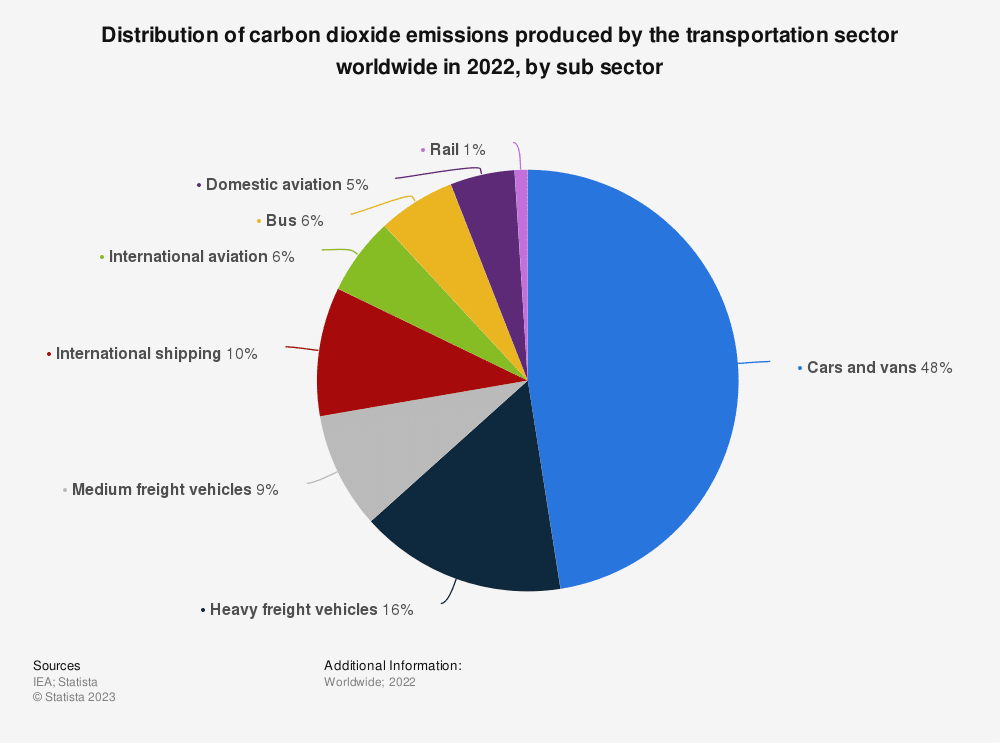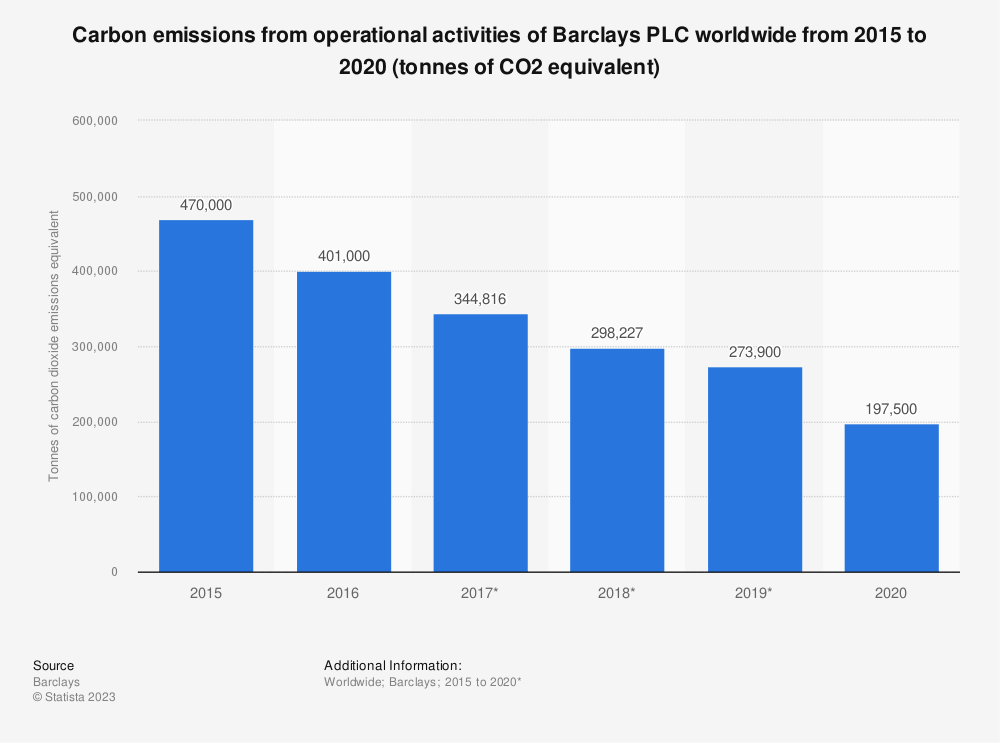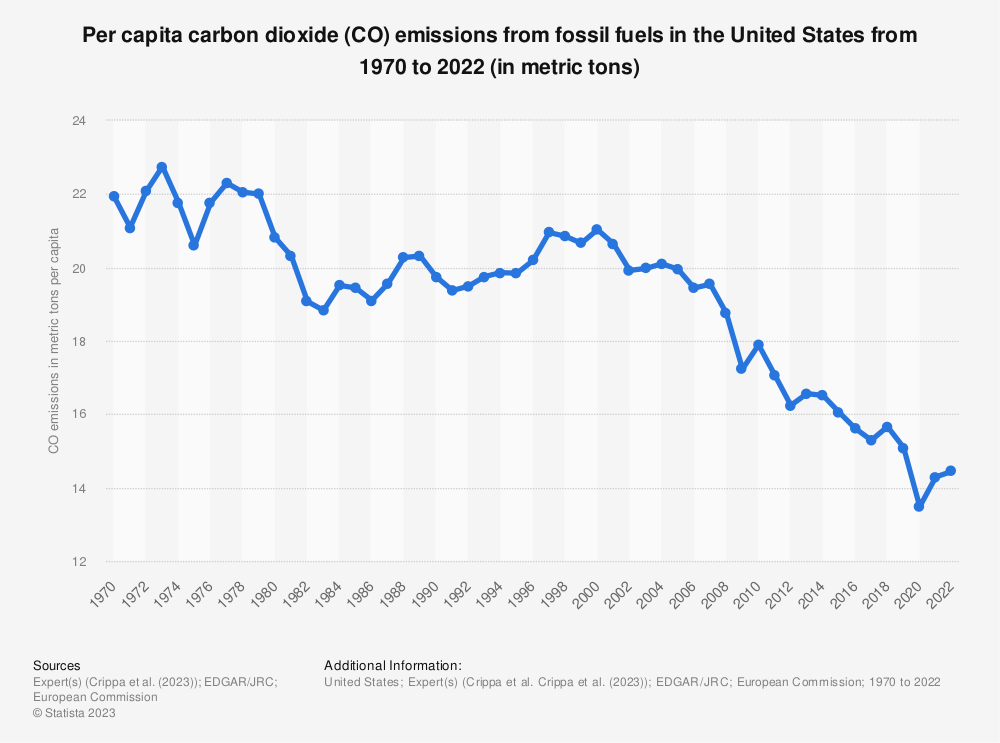What Is a Carbon Footprint?
We all leave “footprints” on the spaces we inhabit. Those spaces include homes, offices, and where we visit in our day-to-day lives. Wherever we go, these footprints leave a trail that’s measured in emissions – more specifically, in carbon.
A “carbon footprint” is the total amount of greenhouse gases (namely, carbon dioxide (CO2) emitted by an individual or business through daily activities, both directly and indirectly. CO2 is produced from many sources and is cited as the primary gas responsible for climate change. According to the latest information from the Department of Energy, the average carbon footprint per person (in the U.S.) annually is 16.6 metric tons of CO2.

What Contributes to Your Carbon Footprint?
How much carbon dioxide do you send into the atmosphere? Nearly every activity in modern society requires energy. Anytime you do something that requires fossil fuels – driving a car, flying in a plane, making a purchase online, cooking and eating, or even watching TV – you emit CO2 into the atmosphere.
The Environmental Protection Agency lists the six primary sources of greenhouse gases as transportation, electricity production, industry, commercial and residential agriculture, land use, and forestry. According to the Inventory of the U.S. Greenhouse Gas Emissions and Sinks, a report by the EPA, transportation accounted for 28.9 percent of all 2017 greenhouse gas emissions.

Find more statistics at Statista
Why does Carbon Footprint Matter?
Carbon emissions are one type of greenhouse gas emission that occurs when carbon dioxide enters the air after a human activity or process. They are crucial because they are the most significant emission type in terms of quantity. According to the Environmental Protection Agency (EPA), as of 2019, carbon emissions totaled 80 percent of all total greenhouse gas emissions in the U.S. These high levels of emissions in the atmosphere contribute to global warming and, ultimately, climate change.
According to Madhumitha Jaganmohan,
Humanity has been in an ecological overshoot since the 1970s, where demand for natural resources exceeded that of what the Earth can regenerate. As of 2021, if the world’s entire population lived like those in the United States, we would need resources equivalent to five times what our Earth can regenerate to satisfy the global demand.
Global ecological footprint based on number of earths 2021

Find more statistics at Statista
Do Consumers Care About Carbon Footprint?
Many strategies for reducing CO2 emissions apply not only to homes but also throughout industries. According to a recent Deloitte survey about companies addressing climate change, 64% of consumers list recycling and reusing as their top three concerns. Another 64% cite reducing single-use plastics as their top concern. The report also found that “reducing carbon emissions was a near-universal priority.”
Your Carbon Footprint Explained
Understanding your own carbon footprint is the first step to improving your lifestyle to help support the environment. This video from BBC News walks you through what impacts your carbon footprint the most and how to reduce it efficiently.
The Carbon Footprint of Mail
“Mail” is considered anything from a letter to a package. Mail can be sent across the street or the globe. Each time mail is sent, it creates a carbon footprint marking its course.
Measuring CO2 Emissions in the Mail Industry
Definitive CO2 emissions data in the mail industry comes from several sources, including two important paper mail delivery lifecycle studies. Pitney-Bowes published a study in 2008 which found that “…the distribution of letter mail by the Posts generates, on average, about 20 grams of CO2 per letter delivered. In addition, a survey of more than a dozen studies shows that the indicative range of CO2 emissions associated with the upstream mail piece creation process is about 0.9 – 1.3 grams of CO2 per gram of paper.
The U.S. Postal Service conducted a similar study in 2008, which found that “total energy consumed by mail products accounts for 0.6% of national energy consumption.” At the household level, energy and CO2 emissions associated with the entire mail life cycle are roughly comparable to those operating any of several common home appliances over the same timeframe.

Carbon Footprint of Mail
The carbon footprint of mail depends on the volume of mail sent and what comprises that mail. As a baseline, up to 29 grams of CO2 can be emitted from the process of sending a standard letter. This includes a direct and indirect impact, such as the sorting and transporting of mail. The direct impact is from the use of paper and postage and any ink printed on paper or packaging materials used to pack and ship an item.
The environmental impact for regular mail varies. However, a typical year of incoming postal mail to a business can add 136kg of emissions to its carbon footprint, equivalent to driving 200 miles in a car.
The Impact of Mail on Forest Acreage
Of course, a large impact on the lifecycle of mail is the creation of paper through deforestation. Trees are beneficial for the environment because they facilitate the distribution of rain, their canopies release oxygen, root systems help prevent land erosion, and forests protect wildlife. Most importantly, trees absorb greenhouse gases that contribute to climate change and global warming.
The amount of paper used for invoices can be measured in trees. According to Payables Place, here’s a breakdown of the environmental impact of paper:
- 1 tree = 8,500 pieces of paper
- 1 million invoices = 118 trees
- 1 million invoices = 36 tons of CO2 footprint
- 1 billion invoices = 118,000 trees
It’s numbers like these that give a more impactful measurement and gives people pause to consider the impact of cutting down trees to make paper.

Mailing Industry Sustainability Initiatives
Several sustainability initiatives have supported the mailing industry, both in printing and mailing practices. For example, biodegradable materials such as seed papers and plant-based, compostable transparent wrappers support more environmentally-friendly mailing supplies. Paper can also be sourced from environmentally-responsible sources, such as FSC-certified suppliers. “FSC” stands for Forest Stewardship Council, which is a group that sets standards for forest products, independently certifies that those standards are met, and labels qualified products. In addition, soy- and vegetable-based inks are increasingly used instead of chemically-based inks. These all minimize the environmental impact of direct mail.
According to research by WhosMailingWhat, the mailing industry is also frequently using sustainability-supportive messaging on direct mail. For example, many companies place the FSC-certified logo on mailings to show customers they’re environmentally responsible with their products. They also use language to encourage the recycling of mail products when the customer finishes using them.
The Carbon Footprint of Electronic Communication
The phrases “Go Green” and “Go Paperless” are regularly used by businesses to encourage customers to switch to electronic transactions and communications. These messages give the impression that electronic communication is more environmentally friendly than traditional, paper-based communication. Let’s look at the complete picture of electronic communication.
Is Electronic Communication Environmentally Friendly?
Everything we do in our day-to-day lives affects the environment – even sending and receiving electronic communications. Emails are sent through laptops, tablets, and cell phones. Most emails, including spam and unread emails, are generally stored on the cloud. Cloud storage requires quite a great deal of electricity, which is still generated by fossil fuels in many parts of the world.
Every email sent uses electricity, as does the network connection transferring the email from your device to someone else’s. As email travels across the internet, each server it crosses uses electricity to temporarily store it before reaching its intended receiver. Sending an email only uses about 1.7% of the energy of delivering a paper letter. However, those numbers add up when you think about the number of emails sent per day versus the number of letters mailed.
So, while emails don’t contribute to paper pollution, they still contribute to carbon emissions. According to The Good Planet, the average American has around 500 unread, most likely junk, emails. For a typical email, electricity is responsible for 4g of CO2 emissions. If an email has a photo attachment, extra storage is needed and takes longer to transmit, so the carbon footprint rises to an average of 50g per email. To put into perspective, sending 65 emails is roughly equivalent to driving .62 miles in a car, equivalent to an extra 40 miles. Globally, the world’s email usage generates as much CO2 as having an extra seven million vehicles on the roads.
It’s not just electronic communications themselves that produce emissions – it’s the method of sending them. Computers contain several non-renewable natural resources extracted from the earth, which require a significant amount of resources and energy to process. These include sand (to make glass for screens), oil (for plastics), and metals (used in wiring and circuitry). The type of metals can include lead, gold, iron, aluminum, zinc, nickel, silver, mercury, cadmium, chromium, and others. Unfortunately, some of these materials are becoming scarce, and their supply chain leads to operations with questionable social and environmental issues.

How Does Electronic Communication Impact the Environment?
It’s difficult to measure the impact electronic communications have on the environment accurately. The sheer amount of emails sent daily around the globe is immeasurable in scope. However, according to Towards Data Science, it’s possible to calculate the reductions of email-caused CO2 emissions in data terms that represent everyday life. They include the following statistics:
- Reducing emails with attachments would lead to a CO2 saving equivalent to 10 million cars driving in one year.
- Reducing the number of email recipients by 10% would save greenhouse emissions equivalent to 412 billion smartphones charged.
- Reducing email signatures in half the emails sent would lead to positive environmental effects equivalent to 148 wind turbines running for an entire year.
- If all of these measurements were applied, CO2 emissions saved would be similar to almost 1 million tanker trucks’ worth of gasoline.
The Carbon Footprint of Billing
Many businesses offer paperless billing options as an alternative to paper invoicing. First, let’s take a look at the carbon footprint of both paper and electronic invoicing.
The Impacts of Paper Invoicing
The most recent Billentis Report estimates nearly 550 billion invoices are produced globally, with this number set to quadruple by 2035. Paper invoices produce three times more CO2 than e-invoices. Paper results in fossil fuel pollution from printing, mailing, and shipping.
Benefits of E-Invoicing
E-invoicing has several benefits. One is the fast delivery of information. Invoicing workflows are simplified, from processing an invoice to receiving and recording payments. Paper invoices produce three times more CO2 than e-invoices, making e-invoicing one of the easiest ways to improve sustainable business efforts. While technology also produces carbon emissions, switching to e-invoicing reduces the overall environmental impact of processing physical invoices. Along with reducing paper use, companies that send and receive electronic documents also help reduce fossil fuel pollution from mailing and shipping.
The Financial and Environmental Benefits of Address Verification Systems
Address verification systems directly tie into invoicing and the lifecycle of mail. Improve the accuracy of direct mail. A commitment to address verification ensures delivery accuracy, reducing carbon emissions from producing and distributing incorrectly addressed mail that will be returned, and positively impacting their efforts at sustainability. Address verification technology benefits businesses, particularly ones that talk to delivery fleets. Delivering goods to the right address the first time saves time and money on returned shipments, undeliverable packages, failed delivery fees, and cuts down on delivery mileage. Sending mail that can’t be delivered properly wastes money (for postage and printing) and wastes paper and ink.
How to Calculate Carbon Footprints Manually
Carbon footprints are manually measurable, understanding that they are a best estimate and not an exact science. Using a carbon footprint calculator, you can figure out how much your daily actions affect greenhouse gases.

How to Calculate the Carbon Footprint of a Company
Companies measure carbon footprint differently than individuals. As a result, the Greenhouse Gas Protocol (GHG Protocol) is one of the most widely used emissions reporting standards for businesses. GHG Protocol requires companies to break down their emissions into three categories or scopes:
Scope 1: Direct emissions. This means that they directly come from your company’s owned- or controlled source, such as company vehicle emissions.
Scope 2: Indirect emissions from purchased sources, such as your company’s consumed electricity or cooling.
Scope 3: Emissions from scope 3 are all the other indirect emissions within your value chain. This can include the upstream supply chain and downstream GHG emissions (e.g. from customer usage). Think of emissions from business travels, waste disposal transportation, or investments.
Using a business carbon footprint calculator will take into account the size of a business, including number of employees, office square footage, and what kind of industry the business serves to measure the company’s carbon footprint.
Businesses have seen the need to reduce their carbon emissions. Barclays LTD has reduced its emissions by over 270,000 tons in the last five years.

Find more statistics at Statista
How to Calculate the Carbon Footprint of an Individual
Your individual carbon footprint is the total carbon dioxide released due to your individual activities. For example, your household’s carbon footprint would be the total carbon dioxide released by your home and everyone living there. Carbon footprint calculators typically ask you to input how much energy you use throughout your home. This calculation includes natural gas, electricity, or propane, how many miles you drive each year, how many flights you may take per year, and how much you spend on items such as food, clothing, paper-based products, computers, and electronics, and more.
Spurred by the concerns of individuals, the US per capita carbon dioxide emissions have fallen steeply over the past 50 years.

Find more statistics at Statista
Carbon Footprint of Printing Paper

How does printing paper fit in with a carbon footprint? According to the website Two Sides, paper and print products make up about 1% or less of our human carbon footprint. As a comparison, transportation and land use make up about 15% of our carbon footprint each. Because paper’s source is a renewable resource that stores carbon, paper is recyclable and is manufactured using mostly renewable energy, its carbon footprint is smaller than expected.
While paper itself may not cause a high rate of carbon emissions during printing, there are other CO2 emissions created involved in print production. Process waste from printing includes energy, printing substrates, ink, dampening solution, blanket and wash up solvents, and anti-set powder. There are many common steps a printing company can take to reduce the carbon footprint’s impact on the environment.
Is Recycling Paper a Sustainable Business Practice?
Waste removal is an inevitable part of any business, and recycling is an added cost. Is recycling worth it? How can you assess the benefits of recycling waste paper? Here are some recycling statistics according to Waste-Free Mail:
- Recycling paper helps to reduce greenhouse gas emissions that can contribute to climate change.
- According to the EPA, recycling one ton of paper saves 17 mature trees, 7,000 gallons of water, and more than 3.3 cubic yards of landfill space. In addition, 17 trees can absorb a total of 250 pounds of carbon dioxide from the air each year. Burning that same ton of paper would create 15,000 pounds of carbon dioxide.
- The process of recycling paper instead of making it from new materials generates 74% less air pollution and uses 50% less water.
- Manufacturing recycled paper uses only 60% of the energy needed to make paper from new materials.
- The construction costs of a paper mill designed to use recycled paper are 50% to 80% less than a mill using new pulp.
Carbon Neutral Printing
Even with significant efforts to increase electronic billing, paper use isn’t slowing down soon. However, the concept of “carbon neutral” printing creates peace of mind around substituting sustainability for printed products. Carbon neutral printing means that all carbon emissions created by a print job will be “offset” through a recognized carbon offset project or carbon credits supporting a renewable project. In addition, each project comes with a personal identification number so that you can track carbon emissions being offset from start to finish.
How to Reduce Your Business Carbon Footprint
Reduce Office Carbon Footprint
Corporations are often cited as one of the primary creators of greenhouse gas emissions. By measuring carbon outputs and working to reduce their carbon footprint, businesses send a message that they understand their role in curbing greenhouse gases. There are many ways to make small changes that have the potential for a big impact, including:
- Reduce energy use: Energy use typically makes up about half of a company’s carbon footprint. Reducing a facility’s energy use cuts costs on energy bills and decreases a business’s environmental burden. This can be accomplished by installing energy-efficient lighting, using energy-efficient appliances, or switching to a green web hosting company.
- Eliminate single-use plastics: Almost all plastic products are made from fossil fuels, and refining those fuels into plastics is an energy-intensive process that drives up global emissions. Items at offices such as cafeteria cutlery, disposable coffee cups and plastic water bottles can easily be switched for reusable items. Opting for reusable replacements reduces a carbon footprint while reducing waste hauling costs, too.
- Offer a flexible work schedule: The COVID-19 pandemic saw a tremendous shift of employees working from home full-time. Therefore, when employees return to the office, consider continuing to offer a schedule where work-from-home days are encouraged. This will lessen the amount of pollution employees create through commuting, as cars create a large amount of pollution that indirectly adds to a company’s carbon footprint.
- Track supply chain efficiency: A business’s complex supply chain offers many chances to reduce its carbon footprint. Ask suppliers if they have quantifiable measurements on their generated greenhouse gas emissions. By advocating for increased transparency from suppliers, you can better understand the environmental risks in your supply chain.
- Educate employees: With proper training, employees can be the greatest asset in reducing an office’s carbon footprint. Make a public pledge to reduce carbon emissions, and ensure employees understand the reason behind the pledge and what they can do to help. When everyone is involved, it can make a real difference.
Reduce Carbon Footprint for Industry
Different industries affect the planet with varying degrees of carbon emissions. They may have a similar focus on reducing their carbon footprint, however. Let’s discuss the telecommunications, healthcare, and hospitality industries’ carbon footprint impressions, and how these industries are working to improve their impact on the environment.
Three Steps to Cut Your Carbon Footprint 60% Today
In this TEDx discussion, writer and climate change activist Jackson Carpenter offers a shift in perspective on carbon that can result in reducing our carbon footprint.
Carbon Footprint Telecommunications

The wireless communications industry represents a significant share of global carbon emissions. According to research published by mobile phone maker Ericsson, the overall telecommunications industry accounts for about 1.4% of emissions worldwide.
How Telecommunications Affects Carbon Emissions
Personal communication devices make up the biggest share of the telecommunications industry’s carbon footprint. About 50% of device-related emissions are associated with usage, and the other half is attributed to a device’s lifecycle. Telecommunications operators also rely on an extensive network of data centers, relay stations, and other infrastructure that require a constant supply of power to function. Much of this is carbon-intensive.
Telecommunication devices such as mobile phones, SIM cards, wires, batteries, and other equipment, are often in service for a few years before they become electronic waste. The glass that makes up a device’s screen can take many years to break down completely. And many of a device’s other components contain heavy metals, including lead, mercury, and cadmium, which, if mishandled, can pollute the environment.
Additionally, these heavy metals are difficult to source. Up to 60 elements from the periodic table can be found in complex electronics like smartphones. Sending old devices to landfills means that new raw materials need to be extracted for every new device, many of which are gradually depleting and non-renewable.
How the Telecommunication Industry is Reducing its Carbon Footprint
The increasing demands for telecommunication equipment and energy consumption of wireless networks continue to rise. However, the wireless industry has already begun making changes to improve sustainability in telecom and reduce energy usage.
The telecommunications industry understands it needs to take a circular approach to achieve better sustainability. According to the International Telecommunication Union, the telecommunication industry will have to reduce greenhouse gas emissions by 45% between 2020 and 2030 to comply with the Paris Agreement. As a result, telecom companies such as Vodafone announced it aims to repair, resell, and refurbish old electronics to eliminate waste and reduce CO2 emissions. Other initiatives include analyzing the possible use of renewable sources, such as solar power, for energy; designing energy-efficient components for data centers; improving backup power sources; optimizing cooling equipment and thermal management via energy engineering solutions; and providing real-time monitoring and analysis of data center energy output.
The Carbon Footprint of Healthcare

What are the Current Impacts on the Environment from Healthcare?
A healthy and sustainable environment is a necessary foundation for human health. Ironically, the environmental footprint of hospitals, which includes pollution, energy use, and waste production, can be harmful to our health. Healthcare’s climate footprint is 4.4% of the global total; if it were a country, it would be the fifth-largest emitter on the planet.
The U.S. healthcare sector is connected to (and dependent on) industrial activities that emit much of the nation’s pollution to air, water, and soil. Healthcare services are also energy-intensive. Hospitals are the second most energy-intensive commercial buildings in the country. Hospitals are large buildings open 24 hours a day, seven days a week. They contain many energy-intensive activities, including heating, cooling, and ventilation systems, computing, medical and laboratory equipment use, sterilization, refrigeration, laundry, and food service.
In addition to the energy used on-site in heating fuels and electricity, the health care system also uses vast quantities of energy-intensive goods and services, such as pharmaceuticals and medical devices, which require significant energy inputs for their manufacturing.
How is Healthcare Reducing its Emissions?
- Improve transportation emissions: Hospital ambulances, building shuttles, mobile lab vans, and other transportation can be made more efficient if switched to energy-efficient models.
- Reduce energy demand: Hospitals’ energy-reduction initiatives can have a measurable impact on improving air quality and patient health and reducing operating expenses.
- Build green: Green design positively impacts the environment, budgets, and staff retention. In addition, when green design and construction principles are adopted early in the planning process, return on investment is almost immediate.
- Support sustainable food systems: Hospitals and health systems can support change into the broader food system. By supporting local farms and promoting healthy diets with reduced meat consumption, hospitals and health experts can encourage healthy food habits in the community.
- Reduce hospital waste: Hospitals in the U.S. generate some 7,000 tons of waste per day, or more than 2.3 million tons a year. Hospitals can save money while diverting waste from landfills and incinerators by making smarter purchasing decisions upstream and recycling, reusing, and composting waste.
Reducing the Carbon Footprint of the Hospitality Industry
The hospitality industry has made significant strides aligning with the Sustainable Development Goals set by the Paris Agreement. However, the hospitality industry does have a ways to go to mitigate the effects it’s already had on climate change. According to a study carried out by the Sustainable Hospitality Alliance, the hospitality industry needs to cut carbon emissions by 66% per room by 2030 to counteract emissions corresponding to growth.
How to Reduce Emissions from Hotels
Hotels have several initiatives they can take to reduce emissions effectively.
- Renewable energy: is an efficient way for hotels to reduce their environmental impact. Upgrading to solar panels and using efficient lighting in all areas of a hotel will guarantee green energy consumption both for electricity and heating, improve a hotel’s energy efficiency, and increase cost savings.
- Leverage technology: Smart energy management systems can prevent unnecessary energy use throughout hotels. For example, technology can detect whether guest rooms are empty or occupied and automatically turn on/off lights, heating, or air conditioning. Technology can also automate lights in common-use spaces, like outdoor promenades, that only require lights to be on at night.
- Eliminate single-use toiletries: Hotel guests love to take them home, but single-use plastics account for 40% of the plastics we produce each year. Considering that 91% of all plastic is actually not recycled makes a good case for why hotels should ditch mini-shampoo bottles.
- Go paperless: Instead of printing invoices, send invoices electronically to guests’ email. Place tablets in rooms or set up QR codes where guests can digitally learn about hotel activities and city guides via their phones. Some systems can help hotels conduct paperless check-ins, check-outs, and electronic payments.
- Reusing sheets and towels: Reusing linens reduces the number of laundry loads washed by 17%, including related water consumption, labor, and energy costs. In addition, hotels worldwide are asking guests to place dirty towels on the floor and hang up clean ones. This reduces the hotels’ water use significantly without impacting the guest experience.
UN and The International Tourism Partnership Agreement
The hospitality industry also has large international support for sustainability initiatives. For example, in 2018, the United Nations (UN) came together with the global organization Sustainable Hospitality Alliance (formerly known as the International Tourism Partnership (ITP), which brings together 14 of the largest hotel companies with 30,000 properties and 4.5 million rooms – about 25% of the global total of rooms. This alliance embraces the ambition of the science-based targets at the heart of the Paris Agreement to offer responsible hospitality for a better environment.
Comparing the Carbon Footprints of Major Companies
How can we compare the carbon footprints of large organizations? In this TED Talk, Charles Robert developed a competitive rating system of companies’ carbon footprints to better inform consumers and influence company behavior to become best-in-class when it comes to sustainable responsibility.
Carbon Footprint FAQ

- What is a carbon footprint?
A carbon footprint is the amount of carbon dioxide (CO2) emissions associated with all the activities of a person, business, country, or other entity. It includes direct emissions, such as those that result from fossil-fuel combustion in manufacturing, heating, and transportation, as well as emissions required to produce the electricity associated with goods and services consumed.
- Do consumers care about your carbon footprint?
Consumers are very conscious about sustainable practices in business, and want to support businesses that keep the environment top of mind.
- How to limit your business’s carbon footprint?
There are several ways to limit a business’s carbon footprint. Initiatives such as becoming more energy-efficient, recycling paper, offsetting carbon emissions, and reducing commuting time through working-from-home can all play a role in reducing a business’s carbon footprint.
- How to reduce your personal carbon footprint?
Reducing your personal carbon footprint can be achieved by switching to more efficient lighting and appliances, buying and consuming fewer meat products, recycling, or driving a more fuel-efficient car.
- What are some sustainable business practices?
Sustainable business practices include addressing supply chain improvements, recycling within office settings, limiting travel or reducing employees’ commutes, and educating employees to support sustainable initiatives at the office.
- Is Electronic Communication Environmentally Friendly?
Electronic communication is generally environmentally friendly. For example, businesses that send and receive electronic documents cut down on fossil fuel pollution paper use. However, computers themselves are not thought to be environmentally-conscious materials.
Sources
- https://www.eia.gov/environment/emissions/state/analysis/
- https://www.epa.gov/ghgemissions/overview-greenhouse-gases
- https://www.statista.com/aboutus/our-research-commitment/2234/madhumitha-jaganmohan
- https://deloitte.wsj.com/articles/consumers-expect-brands-to-address-climate-change-01618945334
- http://www.pb.com/docs/US/pdf/Our-Company/Corporate-Responsibility/The-Environmental-Impact-of-Mail-A-Baseline-White-Paper.pdf
- https://about.usps.com/what-we-are-doing/green/pdf/USPS-EnvImpacts-of-Mail-LCI-Report-06-08.pdf
- http://payablesplace.ardentpartners.com/2019/01/monday-first-thing-safeguarding-environment-einvoicing-epayments/
- https://www.whosmailingwhat.com/blog/eco-friendly-trends-in-direct-mail/
- https://thegoodplanet.org/2020/06/02/how-you-can-save-our-planet-by-deleting-emails/#:~:text=Did%20you%20know%20that%20spam,contributes%200.3%20grams%20of%20CO2.
- https://towardsdatascience.com/how-to-decrease-the-carbon-footprint-of-digital-communication-f3186673818c
- https://www.pagero.com/guides-and-reports/billentis-report/
- https://twosidesna.org/US/our-carbon-footprint-how-do-paper-products-fit-in/
- https://www.wastefreemail.com/faq.html
- https://www.ericsson.com/en/reports-and-papers/research-papers/the-future-carbon-footprint-of-the-ict-and-em-sectors
- https://www.itu.int/en/Pages/default.aspx
- https://sustainablehospitalityalliance.org/our-work/climate-action/
- https://www.nrdc.org/stories/single-use-plastics-101